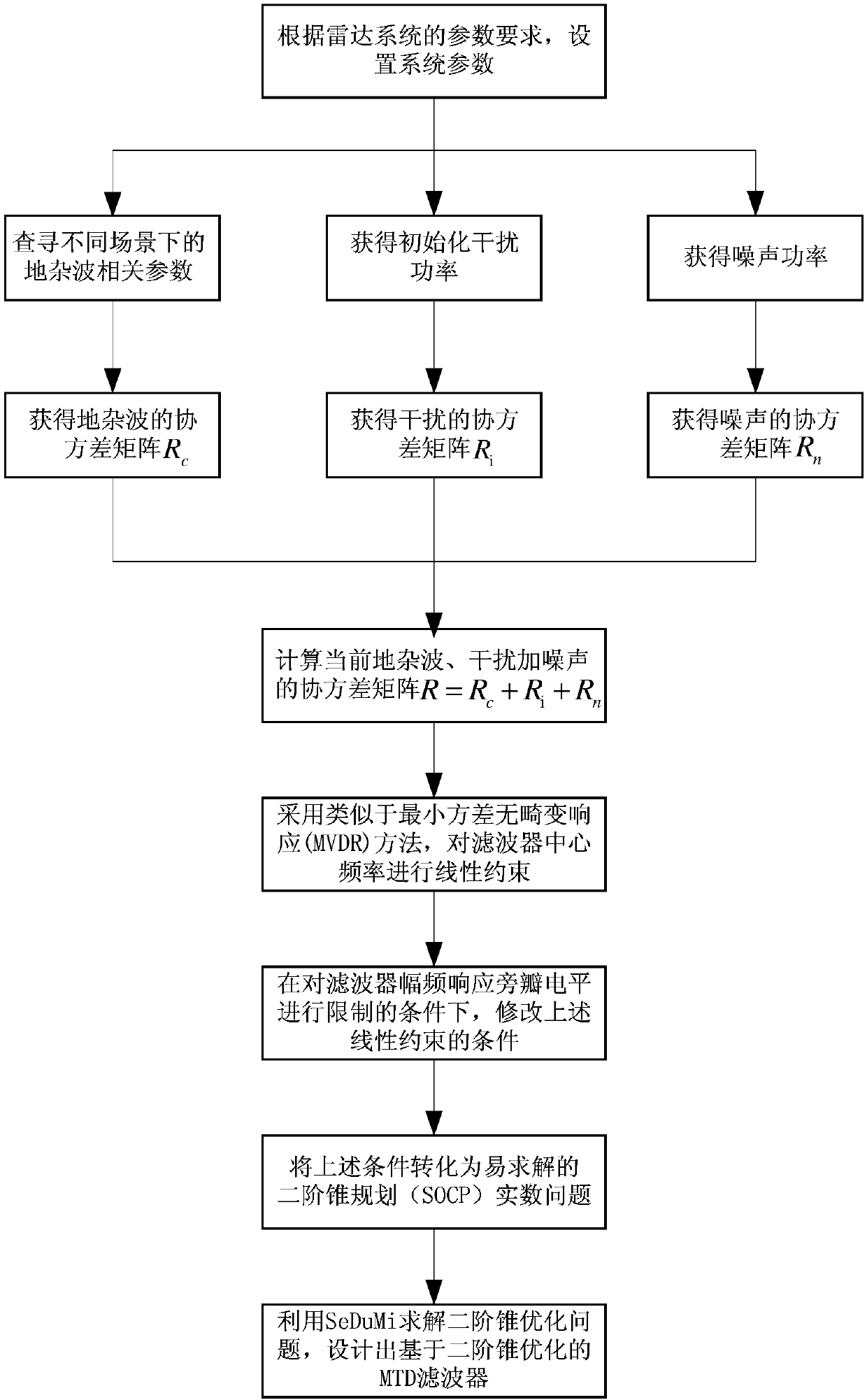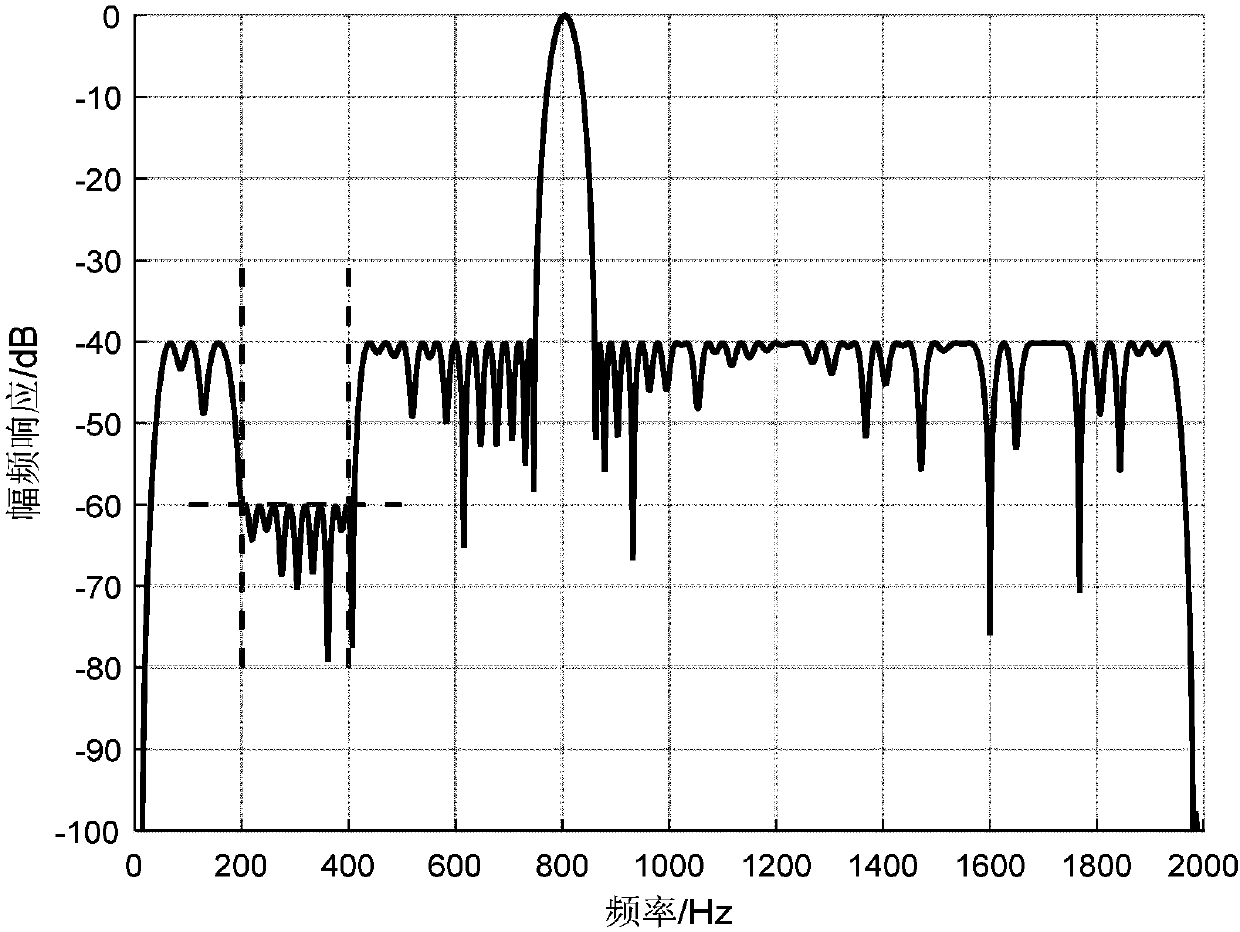MTD filter bank design method based on second-order cone optimization theory
A filter bank and optimization theory technology, applied in the field of signal processing, can solve problems such as performance degradation, filter distortion, and inability to filter wide notches, etc., to achieve enhanced detection capabilities, small calculations, and low sidelobe levels Effect
- Summary
- Abstract
- Description
- Claims
- Application Information
AI Technical Summary
Problems solved by technology
Method used
Image
Examples
Embodiment Construction
[0022] The following will clearly and completely describe the technical solutions in the embodiments of the present invention with reference to the accompanying drawings in the embodiments of the present invention. Obviously, the described embodiments are only some, not all, embodiments of the present invention. Based on the embodiments of the present invention, all other embodiments obtained by persons of ordinary skill in the art without making creative efforts belong to the protection scope of the present invention.
[0023] An embodiment of the present invention provides a method for designing an MTD filter bank based on the second-order cone optimization theory. The MTD filter is used for radar suppression of clutter and detection of targets, such as figure 1 As shown, the method includes the following steps:
[0024] Step 1, setting the operating parameters of the radar, the operating parameters of the radar include the pulse repetition frequency and the accumulated puls...
PUM
 Login to View More
Login to View More Abstract
Description
Claims
Application Information
 Login to View More
Login to View More - R&D
- Intellectual Property
- Life Sciences
- Materials
- Tech Scout
- Unparalleled Data Quality
- Higher Quality Content
- 60% Fewer Hallucinations
Browse by: Latest US Patents, China's latest patents, Technical Efficacy Thesaurus, Application Domain, Technology Topic, Popular Technical Reports.
© 2025 PatSnap. All rights reserved.Legal|Privacy policy|Modern Slavery Act Transparency Statement|Sitemap|About US| Contact US: help@patsnap.com



